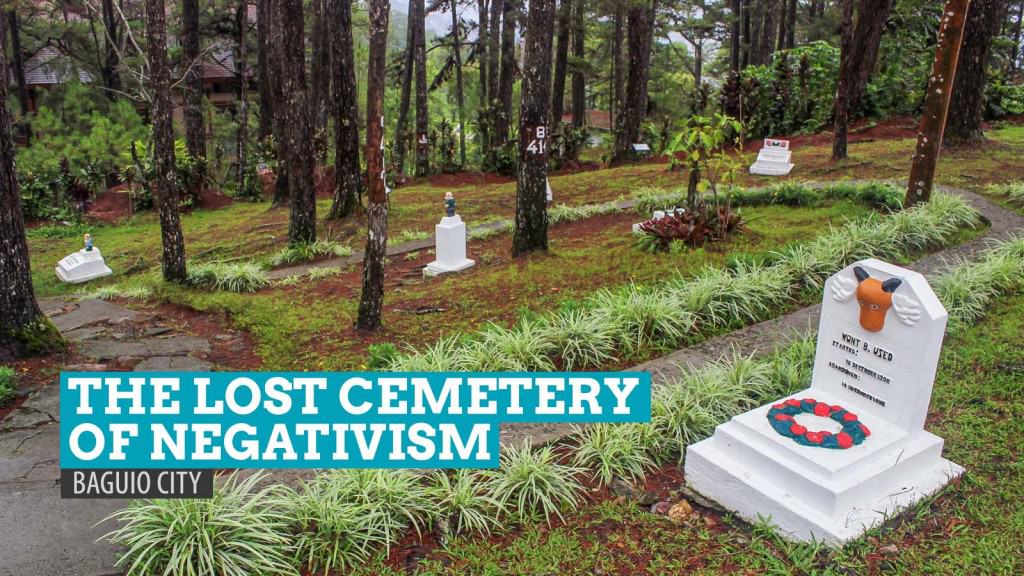2013 • 6 • 13
“Do you know what people did in the old days when they had secrets they didn’t want to share?” Tak said to one of the android attendants of the train. “They’d climb a moutain, find a tree, carve a hole in it, whisper the secret into the hole and cover it up with mud.”
Tak is a character in 2046, a film by Wong Kar Wai. In that scene, he found himself wanting to share a deep secret and the attendant was to be his tree. It was a scene that played in my head repeatedly as I carefully walked on the broken platform and heard the music that twigs and pine needles made when they broke.
There are plenty of trees in the area but none of them triggered that memory of the film, one of my all-time favorites. What did the job were the tombstones that mark the hilly, chilly site. I was at the center of a cemetery, but this was quite different from all the others I had set foot on before. No, no secrets are buried here, but equally fascinating. There were no crosses on gravestones, only images of animals that looked like they came out of a kiddie cartoon show. No melancholic messages for mourning, only punny epitaphs that inspire smiles and laughter. No human bodies six feet under, only negativities — metaphorically, of course. Baguio City just got a little bit more insightful.
Adorning one slope of a hill at Camp John Hay, the Cemetery of Negativism (also known as the Lost Cemetery) is part of the camp’s Historical Core. Established by the base’s commanding general John Hightower in the early 1980s, it is a symbolic site for the burying of negativities — thoughts, emotions, attitude — or, as we usually call them collectively today, bad vibes.
“Negativism is man’s greatest self imposed infliction, his most limiting factor, his heaviest burden,” a marker by the entrance eloquently explains. “No more for here is buried the world’s negativism for all time. Those who rest here have died not in vain – but for you a stern reminder. As you leave this hill remember that the rest of your life. Be More Positive.” It sets the mood and manages the expectations for the visitors.
A walkway made of stone cuts through a red, pine needle-covered ground, allowing visitors to have a closer look at each of the inspirational and enlightening yet oddly hilarious gravestones. One bears the name “Kant B. Done,” said to be born on January 2, 1904 and died on January 1, 1904, a day before he was supposed to be born. On another marker was “Why Dident I,” above an unknown birth date and words, “Lived wondering why. Died for no reason.”
Amusement swallowed my heart as I made my way through the fog that loomed that rainy afternoon but it was easily overpowered by another — guilt. A strange mixture of joy and pain jolted my being upon seeing the most common excuses I uttered in an attempt to evade tasks and responsibilities. And that’s what makes this place effectual. It connects with the lucky souls that walk its grounds and plants a sense of positivity in them. Be Positive, ends the message on the entrance marker.
Inspiration I find in many places but not at a graveyard, at least not typically. But the Cemetery of Negativism gave me that and more. Travel, to me, is therapy. Most of us travel to have fun, sure. But a good number of us also travel for other reasons — to escape, to forget, to start anew. We go distances, take risks, dive into new experiences while carrying a load. Some whisper them away to trees. Some bury them in the ground. Others just let it drop — piece by piece — along the way. We all hope to find three things — fun, clarity, peace of mind. Oddly enough, I found all of them at the Cemetery of Negativism.

The Cemetery of Negativism
Camp John Hay Historical Core, Baguio City
Entrance Fee: P60 per person (P30 for students and senior citizens)How to get to the Cemetery of Negativism: Ride a Baguio Plaza-Scout Barrio jeepney and tell the driver that you’re going to Camp John Hay. He will drop you off at a crossing, from which the site is within walking distance. A good alternative if you’re with a companion or two is taking the taxi. Cab rides in Baguio are cheap and it should cost you around P100 depending on where in the city you’ll be coming from.